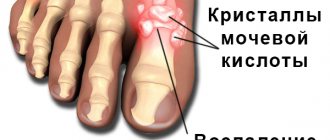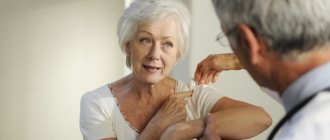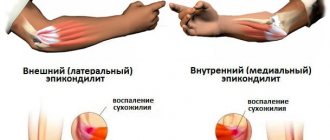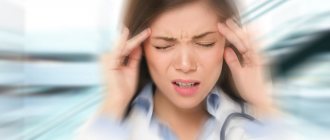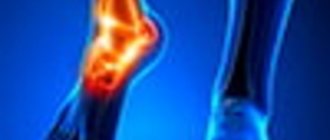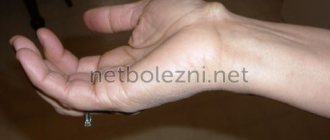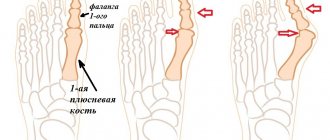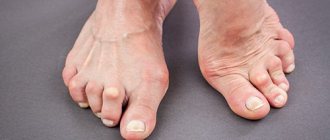Unpleasant foot odor: causes
The problem of disgusting foot odor, although delicate, is very common. It causes a lot of inconvenience to both its owners, teak and their environment.
Hyperhidrosis (increased sweating) is usually considered the main cause of bad odor, but this is not true. The liquid secreted by the human sweat glands, although it contains substances harmful to the body, has practically no odor.
However, it is a favorable environment for the proliferation of various microorganisms, which, as a result of their vital activity, release substances that have an unpleasant odor to humans.
Why does an unpleasant foot odor occur in a healthy person?
- failure to comply with basic foot hygiene: walking in dirty and wet shoes, using dirty socks, unwillingness to wash feet frequently and remove rough skin on the feet;
- wearing socks, stockings and tights made of cheap synthetic materials;
- wearing low-quality or tight shoes that do not provide air circulation;
- individual characteristics of the body that cause hyperhidrosis during an active lifestyle, physical activity, and in stressful situations.
Another reason is fungal infections, which disrupt the water-salt balance of the skin and create a favorable environment for the proliferation of pathogenic microorganisms.
Leg cramps
Episodic leg cramps can occur in completely healthy people and are very common. However, regular seizures can be a manifestation of the disease and are a reason to consult a doctor.
Manifestations of seizures
Cramps (or cramps) are painful involuntary muscle contractions. Cramps are more common in older people, somewhat less common in younger people, and very rare in children under 8 years of age. Women are most susceptible to seizures.
Painful spasms most often occur at rest, in a lying position, often at night, disrupting sleep. Usually the calf muscles and muscles of the foot are involved: the foot involuntarily extends and bends towards the sole, the calf muscle contracts and hardens. Leg cramps are very painful, occur suddenly, last several minutes and go away on their own. After an attack, muscle pain may persist for several hours or even days.
Causes of seizures
Physiological cramps.
Episodic cramps can develop in completely healthy people. Often the cause of painful muscle pain in healthy people is excessive physical activity in an unprepared person (for example, a long climb up the stairs or a long walk). Sometimes cramps can develop due to dehydration (for example, poisoning), hypothermia or overheating. Cramps can bother pregnant women, especially in the second or third trimester.
Metabolic disorders.
Regular cramps are also the result of diseases associated with metabolic disorders (liver, kidney, parathyroid gland diseases, diabetes), diseases of the blood vessels of the legs (atherosclerosis, obliterating endarteritis, varicose veins), as well as with the use of certain medications (diuretics, antidepressants, glucocorticosteroids and many others). Cramps occur due to metabolic disorders in the muscle itself.
Read also: Treatment of varicose veins on the legs
Neurological diseases.
Often, cramps in the leg muscles occur against the background of neurological diseases (for example, amyotrophic lateral sclerosis, Parkinson's disease, multiple sclerosis, polyneuropathy, herniated discs, etc.). Cramps occur due to a disruption in the signal to the muscle.
Sometimes leg muscle cramps are hereditary. These are the so-called “family forms”, which are quite rare. In such cases, the muscles of the thighs and abdomen are involved, and occasionally the muscles of the chest and face can be involved.
Examination for seizures
If you are periodically bothered by leg cramps, you should consult a doctor, primarily a therapist. The doctor will refer you for general blood and urine tests, a detailed biochemical blood test, and an analysis of thyroid hormones. Consultation with an endocrinologist may be required.
Also, it would not be superfluous to consult a neurologist. Depending on the situation, the neurologist may refer you to an MRI of the lumbar spine (for example, to rule out a hernia), an MRI of the brain (to rule out multiple sclerosis), and electroneuromyography (to evaluate the patency of the nerve impulse along the nerves and muscle function).
It must be said that often the cause of cramps cannot be determined even after a comprehensive diagnosis. Such cramps are considered idiopathic.
Treatment and prevention
Physiological cramps usually do not require special treatment; they will go away on their own. Leg cramps during pregnancy are sometimes treated with magnesium supplements under the watchful supervision of an obstetrician-gynecologist.
If cramps develop against the background of some disease, then this disease is treated. However, symptomatic therapy with drugs from different groups is also used: B vitamins, diltiazem, carbamazepine, mexiletine, etc.
Many patients, especially those with idiopathic cramps, benefit from special exercises aimed at stretching the calf muscles. You can also try to relieve muscle spasm yourself by massaging the tense calf muscle. A hot shower can help relax your calves, as can walking on your heels or dorsiflexing your foot.
To prevent crampy, it is recommended to avoid drinking alcohol and caffeine-containing drinks, avoid overcooling your feet, and drink plenty of fluids. But if the cramps do not go away, then do not delay visiting the doctor - it is important not to miss a serious illness.
Be healthy!
Maria Meshcherina
Photo depositphotos.com
Products by topic: (riboflavin), (thiamine), [product strict="pyridoxine"](pyridoxine), (diltiazem) (carbamazepine)
Unpleasant foot odor in men
Due to the physiological characteristics of the structure of the body, the sweat glands of men are larger, and their number on the body is greater than in women. Therefore, the sweating process of the stronger half of humanity is more active and they suffer from hyperhidrosis (increased sweating) more often.
The second reason for increased sweating in men is greater body weight than women, and, accordingly, the amount of fluid in the body.
Therefore, high physical activity, the use of closed, protective shoes and non-compliance with personal hygiene rules cause hyperhidrosis in almost every man and, as a result, unpleasant foot odor.
Folk remedies
Treatment methods with folk remedies for foot pain when walking are very diverse and accessible .
Foot pain can be treated with:
- medicinal baths;
- compresses;
- rubbing;
- ointments.
Before using compresses, lotions, or rubbing, make sure there are no open wounds or ulcers.
External agents should not be used in case of skin inflammation.
Therapeutic baths
Foot baths are one of the most affordable treatments for reducing foot pain. They help relieve tension and reduce swelling.
- Before going to bed, it’s good to make a foot bath of spruce needles and sea salt. Take a tablespoon of pine needles and salt, dissolve in 3 liters of hot water and lower your feet there for 15 minutes.
- Warm bath with birch decoction. Fresh leaves are boiled for 15-20 minutes. For 1 liter of water 25 g of birch leaves. Keep your feet in the broth for 25 minutes.
- Clay foot bath. Dissolve 12 tbsp. l. clay in 3 liters of warm water and keep your feet for 30 minutes. After the procedure, wrap your feet in a warm blanket and drink hot herbal tea. Carry out the procedure before bedtime 2 times a week.
- Salt bath. For 1 liter of water take 100 g of salt. The bath temperature is approximately 38 °C, the procedure lasts 25 minutes. During the bath, try to perform movements to develop your joints. A salt bath is done before bed; you can wash your feet after it only in the morning (for sensitive skin - after 1-2 hours).
- Algae baths. For the bath you will need 400 g of sea salt and 100 g of dry kelp (sea kale). Bath temperature - 43 °C, duration - 20 minutes. The procedure is carried out before bedtime. The prepared mixture is used for 6 procedures, then a fresh one is prepared. Course duration: 15 procedures.
- Bath with chestnut decoction. Grind 0.5 kg of chestnuts, pour 3 liters of boiling water over them and cook for 30 minutes, then let sit for half an hour. Bath temperature - 40 °C, duration - 15 minutes. These baths are done before bedtime, after the procedure you need to put on woolen socks. The course consists of 7 baths, done every other day.
- Bathtub made of elecampane. 100 g of fresh roots are brewed for 15 minutes in 1 liter of water, filtered and made into warm baths (38 °C).
Recipes for therapeutic compresses
But not only baths help relieve pain in the feet. Herbal compresses are also used as folk remedies for joint pain.
- Saline compresses. For 250 ml of warm water, take 2 large tablespoons of salt. A linen or cotton bandage is soaked in the solution and applied to the joints overnight.
- Compresses made from fresh grated horseradish help. To avoid burns, pre-lubricate your foot with oil or rich cream.
- Onion compress. Spread the finely grated onion in a thin layer on a cotton or linen cloth, cover with a second layer on top and wrap with a woolen scarf.
- Cold garlic compress. Take a head of garlic and a lemon per liter of warm water. They are crushed and infused for 2 days. Moisten a cotton napkin in the solution and apply it to the sore spot, hold until the napkin becomes warm.
- Cabbage leaf. You can simply wrap it around your sore leg. You can boil it and make a compress. You can grease the leaf with a mixture of honey, mustard, camphor oil (1:1:3), apply it for 3 hours, wrapping it on top.
- Burdock leaf is used fresh. It is applied to sore joints.
- Honey and salt compress. Mix 20 g of honey with 20 g of fine salt. Apply the resulting mass onto a cotton napkin and apply it, wrap it on top with cellophane and a warm cloth. It is best to apply a compress at night.
- The simplest home remedy for pain relief is salted lard. Place a piece on top and wrap it with cellophane and then with cloth. As soon as the lard becomes transparent, replace it with new one. Repeat the procedure until the pain is completely relieved.
- Grind the leaves and roots of nettle, wrap the resulting pulp in gauze, wrap it in cellophane on top and tie it overnight.
- Potatoes for compresses are used raw and boiled. The raw one is grated on a fine grater, applied to gauze and wrapped around the sore spot, then wrapped with a warm scarf on top. Make such compresses every other day. Boiled potatoes in their skins are pounded and applied, wrapped on top with cellophane and a warm cloth.
Recipes for rubbing and lotions
, various rubbing techniques are effectively used to reduce pain in the feet . They lubricate sore knees, ankles, and joints.
- Dissolve a tablespoon of salt in a glass of milk. Lubricate sore feet with the solution in the morning and evening. Treatment is carried out in 3 courses of 30 days with a ten-day break. During the procedures, the feet may sweat, but you can wash only once every 3 days.
- Take 100 g of honey, 100 ml of black radish juice, 50 ml of vodka, 50 g of salt. Mix everything and rub into sore spots once a day.
- Burdock root, dandelion, coltsfoot and lilac flowers are poured with vodka. All herbs are taken in equal quantities. Leave for 3 days and use as a lotion. To enhance the therapeutic effect, mummy is added.
- Rub radish juice into affected joints.
- Chestnut rubs. 300 g of peeled chestnuts are infused for 12 days in 500 ml of vodka.
- Take the same amount of sweet clover, wild rosemary, thyme, burdock and wheatgrass roots, juniper berries, hop cones. Pour vodka over the raw material and let it brew for two weeks in a dark place.
Recipes for warming ointments
Since ancient times, traditional healers have used to reduce pain . Sometimes they consisted of exotic ingredients, but for the most part they were easy to prepare yourself.
- 150 g pork fat, 30 g salt. Mix everything and lubricate the sore spot.
- Mix 10 g of powdered calendula flowers with Vaseline.
- Finely chop onion (1 piece) and fry until transparent. Add beeswax (a teaspoon) to it. Warm the mixture for 5 minutes. Strain and let cool.
- 50 ml camphor oil, 1 egg white, 50 g mustard powder, 50 ml vodka. Mix everything until a homogeneous consistency is obtained.
Of course, the use of folk remedies for foot pain is not the only treatment.
Their use enhances the therapeutic effect of traditional methods, such as:
- physiotherapeutic methods - magnetic therapy, ultrasound, infrared therapy, ozone therapy, radon and sulfur baths;
- drug treatment - anti-inflammatory drugs, antibiotics;
- physiotherapy;
- massage.
Some diseases - hallux valgus, ingrown toenails, varicose veins, heel spurs - may require surgical intervention.
